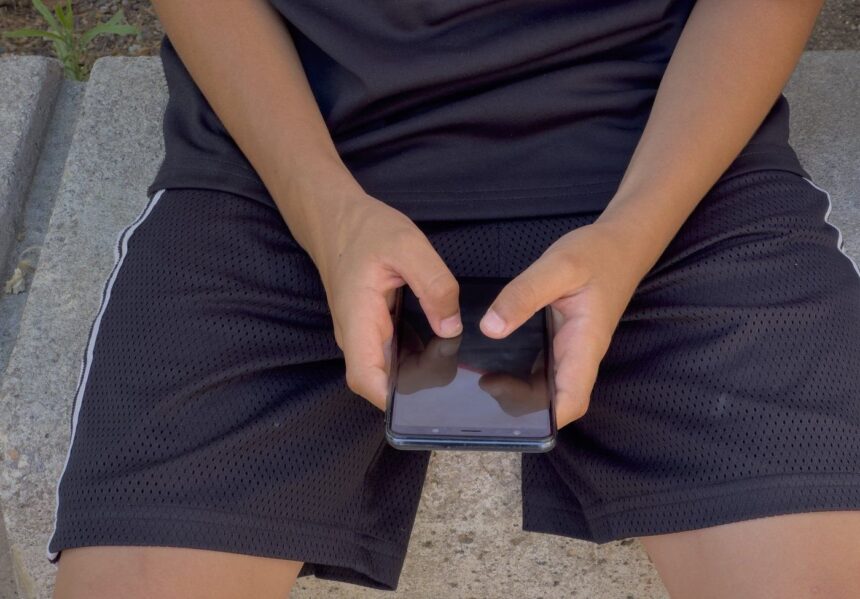Article – As the school year comes to a close across Canada, educators, parents and students are reflecting on a significant shift in classroom dynamics. It’s been roughly a year since provincial governments nationwide implemented various forms of cellphone restrictions in schools, a policy shift that initially sparked heated debate among stakeholders.
Walking through the hallways of Riverside Secondary in Windsor last week, I noticed a striking difference from my visit a year prior. Students were gathered in small clusters between classes, but instead of the familiar sight of downturned faces illuminated by screens, they were talking, laughing, and—perhaps most surprisingly—making eye contact.
“The first month was rough,” admits Principal Janine Delaney. “We had more than a few dramatic confiscations. But now? Most kids don’t even try to sneak them out anymore. It’s become the new normal.”
The Canadian Teachers’ Federation reports that 78% of educators now support the restrictions, up from 62% when the policies were first announced. This growing support comes as teachers observe tangible benefits in their classrooms.
Grade 10 math teacher Carlos Menendez at Toronto’s Northern Secondary School has witnessed a marked improvement. “I’m spending less time asking students to put phones away and more time actually teaching,” he explains. “My students’ quiz scores have improved by an average of 12% compared to last year’s cohort.”
The provincial approaches have varied significantly. Ontario and Quebec implemented some of the strictest measures, with devices banned entirely during instructional time and limited exceptions for educational purposes or health needs. British Columbia and Alberta opted for more flexible guidelines, allowing individual schools to determine specific policies.
Statistics Canada’s preliminary education survey suggests attention spans in classrooms have improved across all provinces implementing restrictions. However, the data reveals regional differences in effectiveness, largely corresponding to how strictly policies are enforced.
“What we’re seeing is that consistent enforcement matters more than the technical details of the policy,” explains Dr. Amrita Singh, education researcher at the University of Toronto. “Schools that made clear expectations and stuck to them saw better results than those with stricter rules applied inconsistently.”
Not everyone views the change positively. The Canadian Civil Liberties Association raised concerns about potential impacts on student autonomy and questioned whether bans adequately prepare young people for technology-driven workplaces.
“We’re teaching compliance rather than responsible use,” argues CCLA spokesperson Jeremy Thompson. “These young people will enter workplaces where they’ll need to self-regulate their technology use. Are we helping them develop that skill?”
Parents have reported mixed experiences. A survey by the Canadian Parents Coalition found 67% support the restrictions, while 22% remain opposed and 11% are undecided. Support tends to be strongest among parents of younger children and decreases somewhat with high school parents.
Montreal parent Marie Dupont has seen positive changes at home. “My daughter was constantly distracted before. Now she’s reading actual books again after school instead of scrolling TikTok. Her English marks are up significantly.”
Meanwhile, students themselves remain the most divided demographic. Student council president Zoe Williams at Victoria’s Oak Bay High School acknowledges the benefits but sees room for improvement.
“Sure, people talk more at lunch now, and classes are less distracted,” Williams says. “But we’re still not having real conversations about healthy tech use. It feels more like a punishment than education sometimes.”
The restrictions have created unexpected side effects. School librarians report increased book borrowing, with the Canadian School Libraries Association noting a nationwide 23% increase in library circulation. Meanwhile, board game clubs and card games have seen a resurgence during lunch periods.
Educators are also noting mental health impacts. School counselor Rebecca Sharma at Edmonton’s Strathcona High School has observed changes in student well-being. “We’re seeing less social media-driven anxiety and FOMO—fear of missing out. But we still have students struggling with technology addiction who now just binge when they get home.”
The Canadian Pediatric Society has cautiously endorsed the restrictions, citing research linking excessive screen time to attention problems and sleep disruption. However, they emphasize that bans alone aren’t sufficient.
“Policies need to be accompanied by digital literacy education,” says Dr. Michael Chan, CPS spokesperson. “We need to teach healthy technology habits, not just remove devices temporarily.”
As the second year of restrictions approaches, provincial education ministers met in Winnipeg last month to share outcomes and best practices. The consensus appears to be that restrictions will remain, though with potential refinements.
Saskatchewan Education Minister Jeremy Cockrill acknowledged the evolving approach: “We’re learning what works and what doesn’t. The goal isn’t to demonize technology but to create focused learning environments and teach responsible digital citizenship.”
The federal government has taken notice. The Prime Minister’s Office announced a national framework for digital citizenship education that will complement provincial cellphone policies, expected to roll out next academic year.
For now, schools continue adapting. Many have created designated “phone zones” where students can check devices during specific breaks. Others have implemented tiered approaches based on grade levels, with more flexibility for older students who demonstrate responsible use.
As Delaney puts it: “We’re not going back to the old days. These kids still use technology constantly. But for a few hours each day, they’re present with each other and their learning. That’s worth protecting.”






